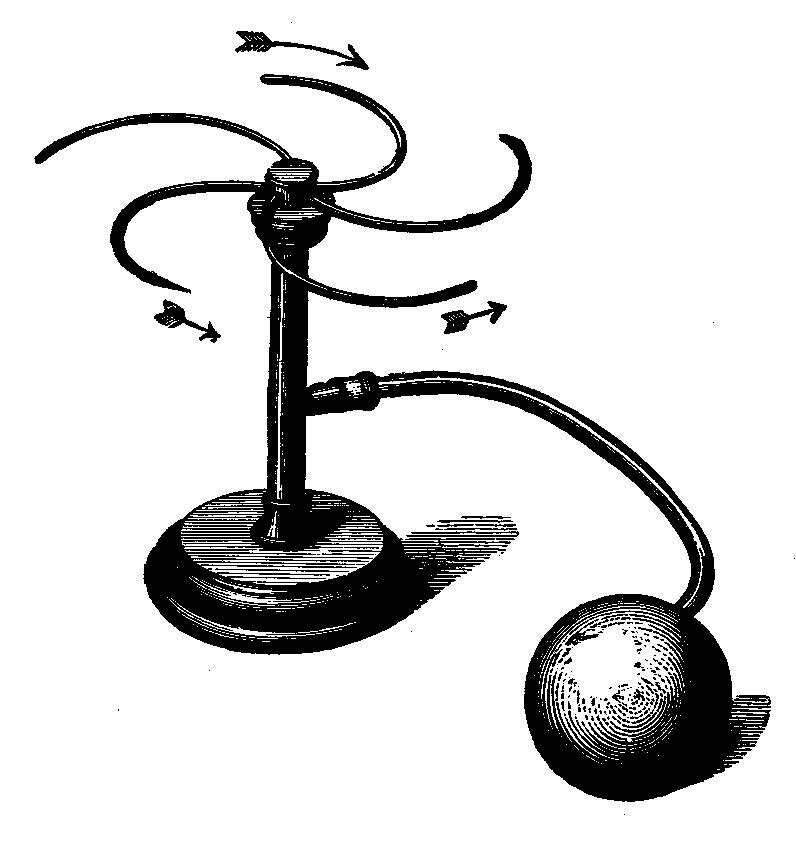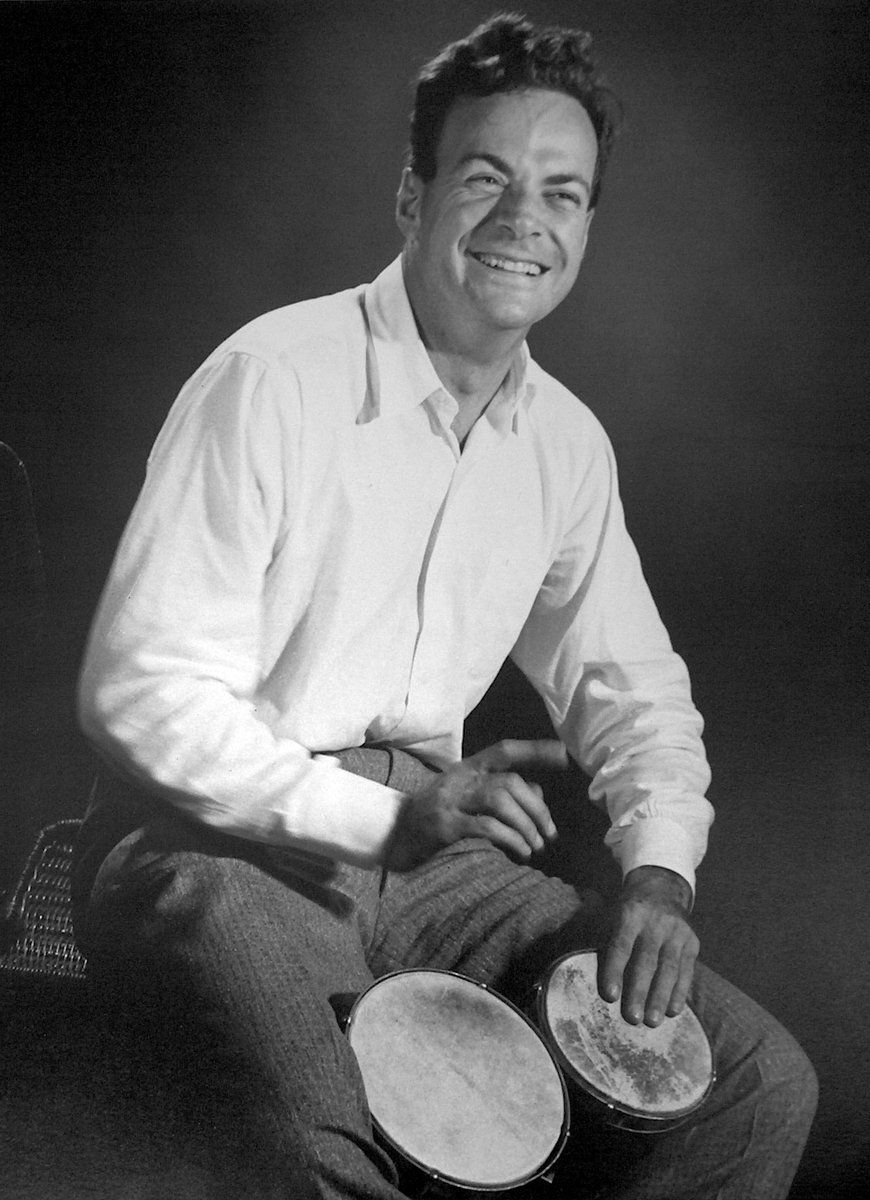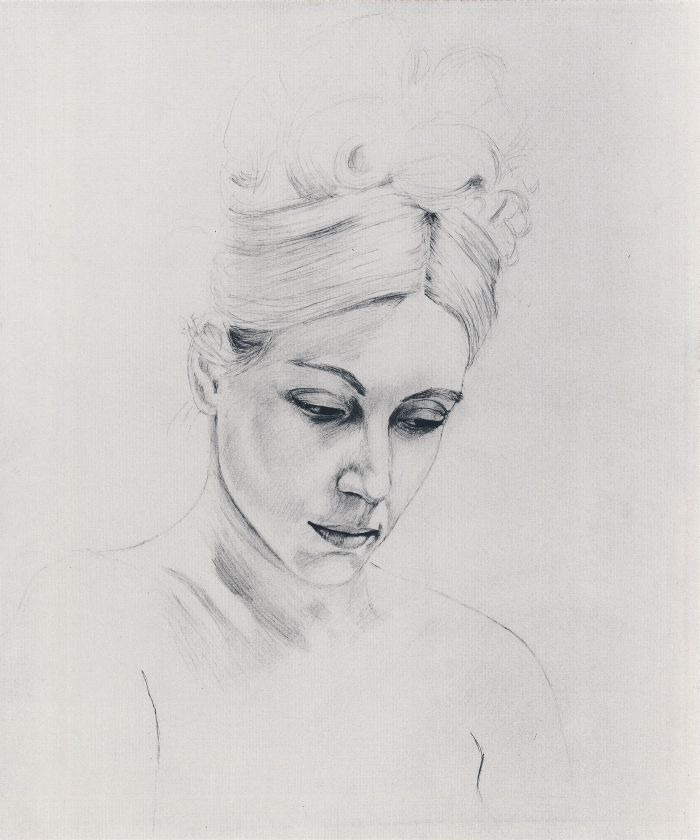Icons of EE: Richard Feynman
After following module 4, you probably wondered, “why is there an image of Feynman playing the drum on page one?” Well, you’re in good company, he didn’t get it either. Richard Feynman was, however, an avid drummer. He was also a safe cracker, a nude model painter and a world-renowned lecturer. Oh, and he also won a Nobel Prize in physics, but, considering his personal life, one could argue that’s not his biggest achievement.
Feynman is one of those figures in science everybody vaguely knows. Considering his accomplishments in science and his eventful life, he deserves more than that. I’ll try to give an overview of his life, and add a few interesting anecdotes.
Youth and studies
Richard Feynman was born in New York in 1918 and lived there until he started studying. In his childhood he already showed a great affinity for science and engineering, teaching himself advanced math and repairing radios in his basement. He also developed a strong tendency to try and fool people and make practical jokes, like the classic upside down cup filled with water. When he finished high school, he initially applied for Columbia University in New York, which at the time still had a Jewish quota. Despite being an avowed atheist, Feynman was rejected. He then decided to attend MIT, where he studied mathematics, electrical engineering and finally physics, in which he got his bachelor’s degree. Afterward, he moved to Princeton, where he worked with some renowned scientists like Einstein and Pauli. Of course, he did important research there, but something I would like to focus on is a device named after him: the Feynman sprinkler. See Figure 1. The ball to the side contains air, and when you press it the air goes up through the pipe and comes out of the sprinkler ends at the top. The sprinkler top is able to rotate and will do so in the opposite direction of the air. The big question is, what happens when you release the ball and air is sucked back into it through the sprinkler? Feynman did this experiment with water instead of air, and broke a large water tank trying to find out. You could just look up the result, but it’s way more fun to try and think for yourself what the solution might be.

Sprinkler
The Manhattan Project
Feynman had just landed a job at the Bell Laboratories to work under William Shockley, who would later discover the transistor, when an army general requested physicists to work for the army. Feynman agreed and left his prestigious job at the Bell Labs. He first worked on mechanical computers, a few years before they would be replaced by their electrical counterparts. Later, after a short return to Princeton to finish his thesis, he was asked by Robert Oppenheimer to join the efforts in Los Alamos to make an atomic bomb. He was initially hesitant, but considering the importance it could have in the war he decided to move to the facilities there. His wife, who was infected with Tuberculosis, moved to a hospital not too far away. Feynman quickly impressed his boss, Hans Bethe, and got assigned as the head of a small group of theoretical physicists who made calculations for the fission bomb. Later, he would also be in charge of controlling the safety of the uranium enrichment plant, to prevent a nuclear chain reaction. During this time, communication with his wife happened through mail, and for Feynman, this meant playing cryptographic games. His wife would encode her letters and he would try to decipher them. The censoring agents, employed at Los Alamos to prevent espionage, didn’t like this one bit, because they couldn’t read what information was being transmitted. After some discussion, they agreed that the letters could remain encoded, but the key had to be delivered along with the message. The censoring agents would then check the message and remove the key. This became a game to Feynman, who started making bets with colleagues on what he could or couldn’t send out through the censoring office. Feynman also quickly got a name as a safecracker. He often borrowed documents he needed from coworkers by stealing them from their filing cabinets. This was his way of protesting the low security for classified documents. His actions caused a few cycles of the organization buying better locks, and Feynman picking them again.
Rio de Janeiro
After the war, Feynman was hired at Cornell University, New York. Here, he laid the groundwork for his research on quantum electrodynamics, for which he would eventually receive his Nobel Prize. A few years later, in 1949, the Soviets detonated their first atomic bomb. This started a communist witch hunt in the USA. The loyalty of Feynman was questioned, and he emigrated to Brazil for a year, until the situation calmed down. In Rio, he taught some classes at the CBPF university. He quickly started to love the country and its culture. He also got in touch with samba music. His love for percussion found a new form with the frigideira, a small metal frying pan. He even used it to perform in the Carnaval parade of Rio. During his lifetime, Feynman would often return to Brazil.

Feynman
Caltech
His trip to Brazil was part of his contract with Caltech, who was willing to do a lot of concessions to get Feynman to work for them. When he returned after one year, he had a very clear meaning about teaching. He grew discontent with the way science was taught in some places, and emphasized the importance of teaching understanding instead of information. He got a name among students for being an outstanding lecturer, and put a lot of work into this. Some of his lectures were recorded and written down in a book we all know: the Feynman Lectures on Physics. For the cover, Feynman requested a picture of a drum sprinkled with powder to show wave modes. Considering his somewhat alternative lifestyle, the publisher feared this would suggest a connection with drugs, and replaced the image by one of Feynman playing the drums himself.
Besides teaching, he did research on numerous subjects. One of these was quantum electrodynamics, which describes how light and matter interact on a quantum scale. For this research he earned a Nobel prize in physics, jointly with Julian Schwinger and Shin’ichirō Tomonaga. Feynman hesitated before accepting it because he didn’t want to get the same level of fame as, for example, Niels Bohr. Years before, he had seen how nobody dared to debate with Bohr because he was such an important scientist, and didn’t want anybody to treat him this way. After some deliberation, he concluded that refusing the prize would make even bigger headlines, and decided to accept it.

Drawing by Feynman
I realize this summary is nowhere large enough to tell all the interesting stories of this curious character. If you’re interested in reading more, the semi-autobiography ‘Surely You’re Joking, Mr. Feynman’ is a good choice.
